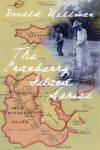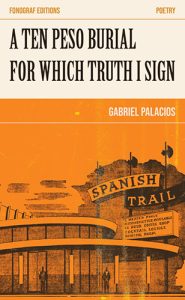The Cranberry Island Series
The Maximus Poems of Charles Olson continue to inspire, by way of example, many off-shoot projects by poets who came after. Olson’s intimately grand gesture was scooping the local, immediate concerns of Gloucester, Massachusetts onto the historical and mythic world stage, while devoutly insisting the context remain personal. This gave both the permission and encouragement for numerous similar endeavors by poets seeking to weave broad, historical scope into autobiographical material. The most successful of these projects are ones similar to Donald Wellman’s Cranberry Island Series, where the poet steers clear of overly emulating Olson’s work (in terms of the “projective” form it takes across the page) and person. Wellman creates a work shaped according to its own needs assuming a form wholly its own.
The Maximus Poems of Charles Olson continue to inspire, by way of example, many off-shoot projects by poets who came after. Olson’s intimately grand gesture was scooping the local, immediate concerns of Gloucester, Massachusetts onto the historical and mythic world stage, while devoutly insisting the context remain personal. This gave both the permission and encouragement for numerous similar endeavors by poets seeking to weave broad, historical scope into autobiographical material. The most successful of these projects are ones similar to Donald Wellman’s Cranberry Island Series, where the poet steers clear of overly emulating Olson’s work (in terms of the “projective” form it takes across the page) and person. Wellman creates a work shaped according to its own needs assuming a form wholly its own.
The Cranberry Island Series is a meditation on place. Moving back and forth between prose pieces and sets of poems, Wellman unveils an understory study of residency on Cranberry Island off the coast of Maine, where he grew up and lived much of his life. He describes how “several decades of writing” make up the book. He’s folded “historical documents into the fabric” of the poems, while oral histories, along with “soul journeys” and “documentary fragments, images, words, and characters” all serve to further flush out the personal record presented within the prose. Wellman documents his perceptions surrounding the events and relationships swarming round within his memories of the island. At times, certain elements presented are imaginary, invented in the act of writing. The creative text verges into historical facts, enhancing the connections Wellman explores.
Wellman refers to the book as “autoethnography” and acknowledges its indebtedness to Olson’s time in the Yucatan. During this period he claims Olson “practiced an ethnography that responded to cultural differences and deep similarities between self and other.” Wellman continues on to offer the following definition of the term: “Autoethnographic poetry is an investigation into the nature of self and ego as a phenomenon that arises in the interactions between the one and the many, the body and the polis, the moment of apprehension formed by the in-swirling of cosmic and historical forces.” He revisits specific fields and roads, the buildings and the individuals with whom he shares a lineage of connections whether through family or friendship. Water imagery predominates throughout the book, and several photographs depicting views from the island shores are included, which is rather fitting for “Wellman is water man.” Ultimately, this is the personal saga of Wellman’s coming to terms with his past.
Olson does in fact surface as a tangential character within Wellman’s life story, primarily via connection through Olson’s first wife, Connie. Her second marriage brought her, along with Olson’s daughter Kate, to live on Cranberry Island. Wellman states: “I did not realize that Olson’s daughter Kate Bunker was a playmate of my younger brother William and my sister Margaret, a child and woman who was often in our house on Cranberry.” Olson’s initial visit to the island, however, was spent with Robert and Helen Hellman, Robert having been an instructor at Black Mountain College: “Olson visited the Cranberry Islands three times: first in 1957 because of the connection with the Hellmans and then again in 1967 and in 1969.” The sorrowful tale Wellman relates of Kate’s subsequent lapse into alcoholism and her early death is a too-familiar reminder of consequences wreaked by family tribulations upon notable individuals of promise.
Wellman notes: “I have learned to write by reading.” While he is an academically trained medievalist (he includes here his own translation of the Old English poem “The Seafarer” and also frequently mentions the importance of Pound’s work providing clear directive for his own), much of his prose shifts away from a formal and professional tone to a distinctly informal and idiosyncratic presentation. This lends a certain amount of unevenness to the end product. Yet Wellman’s unbridled commitment to setting down an emotionally, spiritually attuned and accurate record credits the book with an honesty that’s rarer than most. Where he ranges further into the personal than is advisable, he does so with an ever steady directive to locate “provisions for the homeward voyage, / his drum, his canoe.” There is little gained by faulting him in this regard, especially when he’s mid-voyage, as it were.





